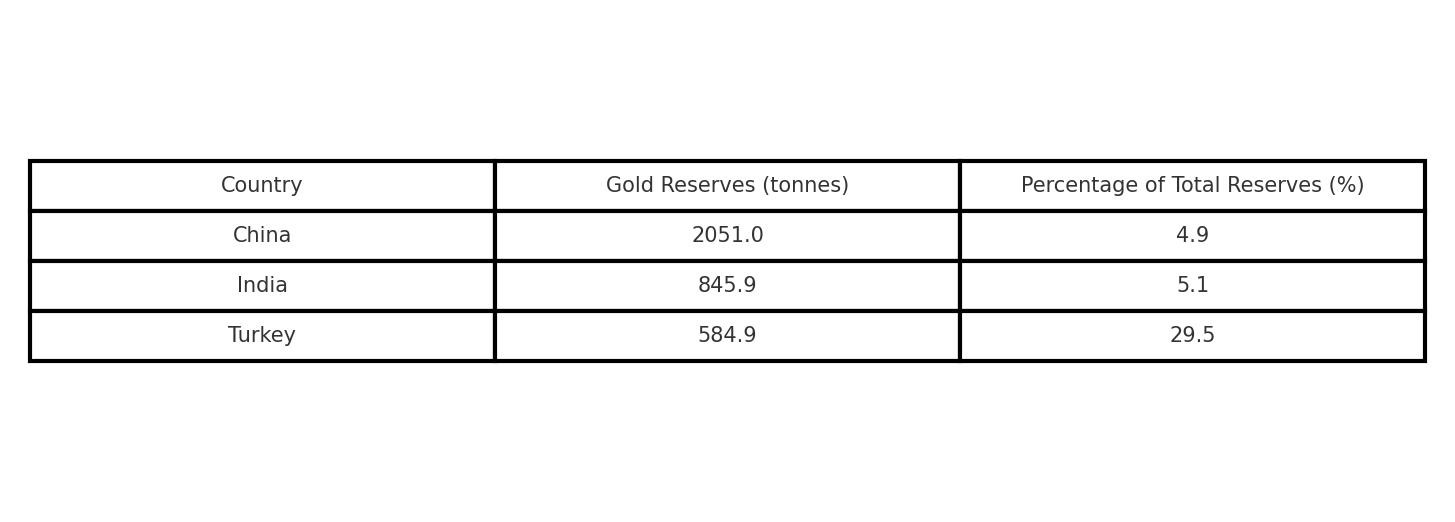Gold is reclaiming its position—not as a relic of the past but as the foundation of financial security. While Western nations debate its relevance, central banks in Eastern and Southern regions are quietly leading a seismic shift, reshaping the global financial landscape with their unprecedented gold accumulation.
This shift isn’t speculative; instead, it’s grounded in data, deliberate strategy, and a growing departure from traditional reserve currencies.
Central Banks’ Accelerated Gold Accumulation
To begin with, the World Gold Council’s latest survey reveals that 29% of central banks plan to increase their gold holdings this year—a record high. But what drives this trend? The motivations are clear: diversification, economic stability, and a hedge against geopolitical risks.
Here’s a look at the gold reserves of key players driving this trend:

These figures are more than just numbers—they make a powerful statement. Central banks in these regions actively reduce their reliance on traditional reserve currencies like the U.S. dollar and turn to gold as a cornerstone of financial stability.
China’s Strategic Use of Gold
Next, let’s consider China, whose gold purchases have captured global attention. The sheer scale of its acquisitions raises questions about the motives behind them. Analysts suggest that these purchases could be a hedge against the U.S. dollar’s dominance or part of a broader strategy to challenge its global status.
Moreover, speculation suggests that China’s actual gold reserves may far exceed reported figures. This calculated effort strengthens financial independence, insulates against potential economic sanctions, and positions gold as a central pillar of a new global financial order. Clearly, gold plays a pivotal role in navigating today’s complex geopolitical landscape—a lesson not just for nations but also for individuals seeking to safeguard their wealth.
Why Gold?
So, why are central banks turning to gold? The reasons for this strategic pivot are compelling:
- Diversification: Gold counterbalances reserve currencies, reducing exposure to dollar-dominated risks.
- Economic Stability: Unlike fiat currencies, gold resists inflationary pressures and retains value during economic turbulence.
- Geopolitical Resilience: In an era of rising global tensions, gold offers neutrality and freedom from political risks.
What Does This Mean for You?
If nations managing trillions in reserves trust gold as a cornerstone of their strategies, isn’t it time to consider it for your portfolio? Owning physical gold provides the same benefits on a personal scale—diversification, inflation protection, and peace of mind.
Gold isn’t just for governments. It’s for individuals who value security and want to safeguard their wealth against the unexpected.
Lessons from History
History reinforces gold’s value. For example, during the 2008 financial crisis, gold prices surged as investors sought safe havens. Today, as the world grapples with mounting economic and geopolitical challenges, gold remains as relevant as ever.
Take the Next Step in Securing Your Wealth
Central banks lead the way, and their actions send a powerful message: gold provides stability in uncertain times. Isn’t it time to follow their lead?
Whether you’re building your portfolio or strengthening it, physical gold offers unmatched security and long-term value. Take control of your financial future with the enduring strength of gold.
Gold is more than wealth—it’s security in a world of uncertainty.
This article is for informational purposes only and should not be considered financial advice. Consult with a financial professional to determine the best strategy for your individual circumstances.






